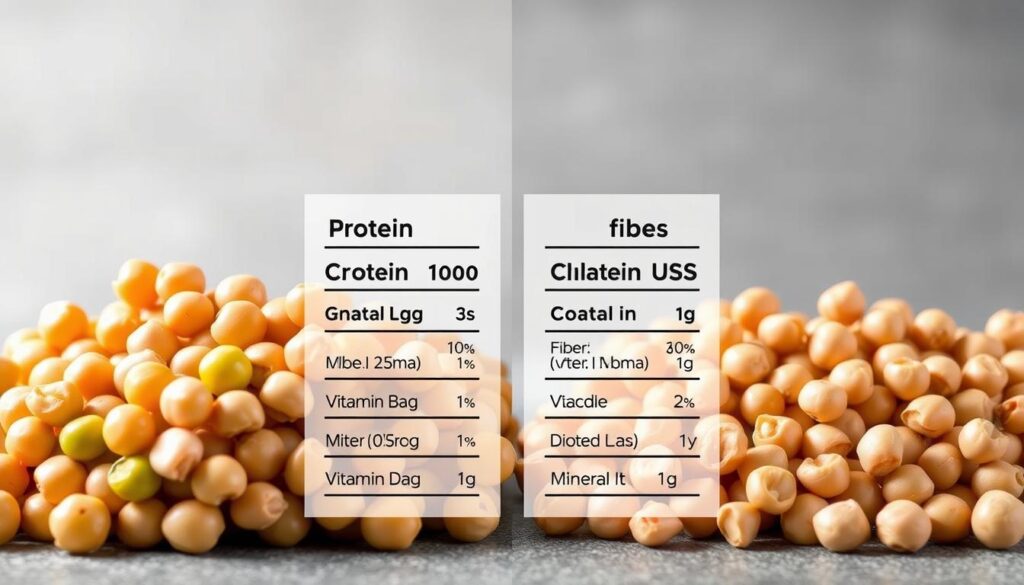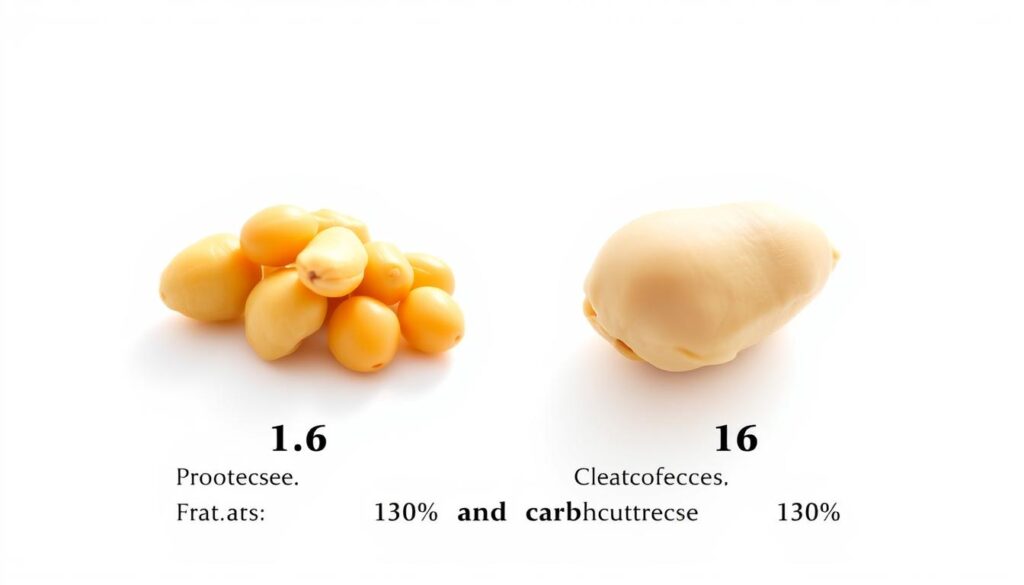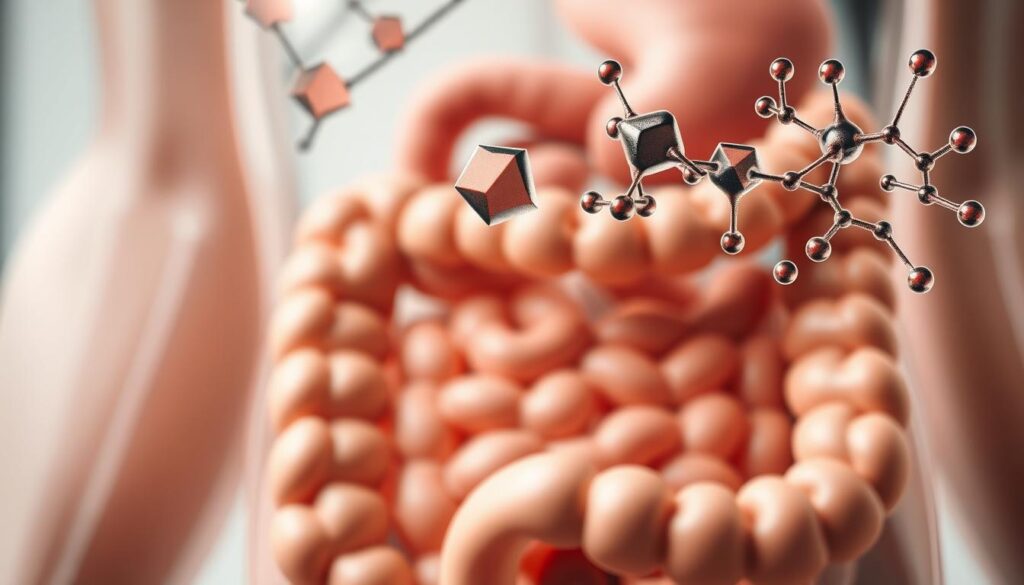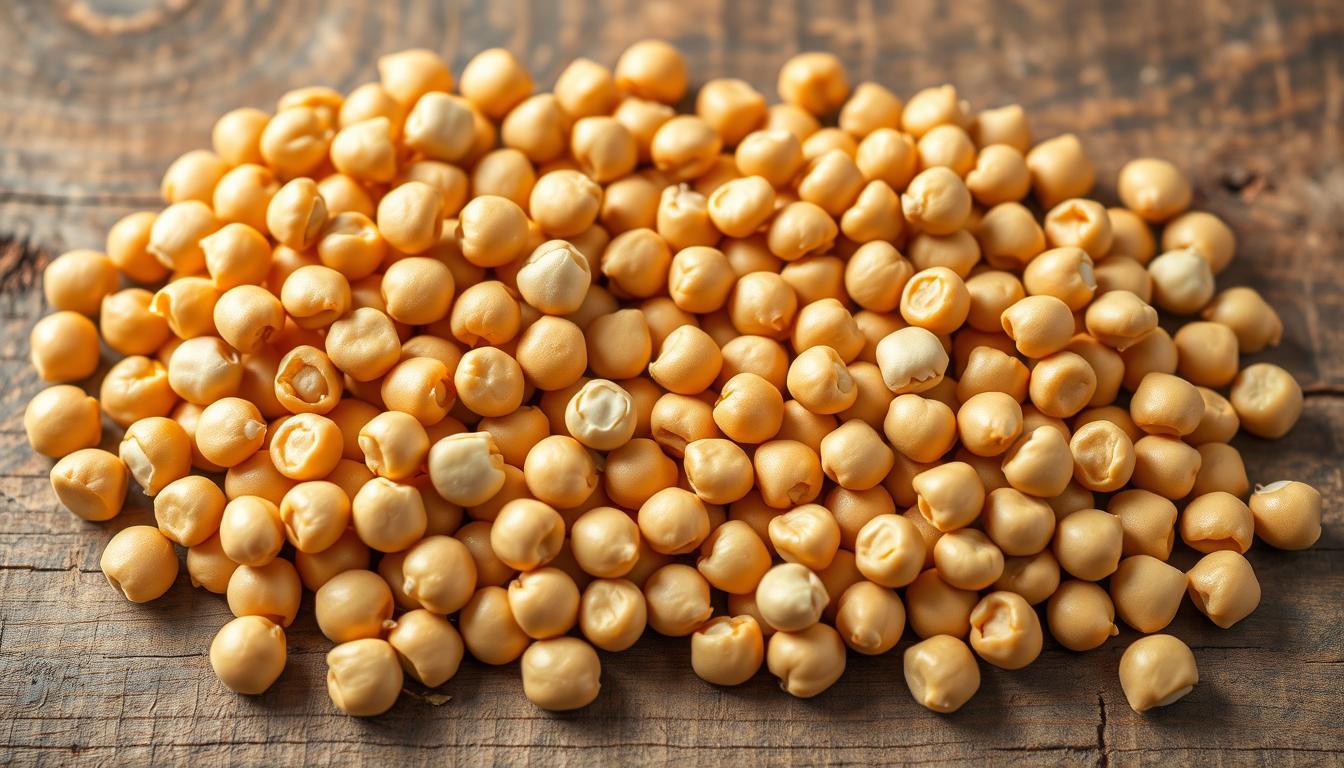Have you ever wondered which legume reigns supreme when it comes to nutrition and health benefits? Soybeans and chickpeas, two of the most popular legumes, often find themselves in the spotlight. But what sets them apart?
While both are excellent sources of protein, they cater to different dietary needs. Soybeans stand out for their high vitamin content and complete protein profile, making them a favorite in plant-based diets. On the other hand, chickpeas, also known as garbanzo beans, boast an impressive fiber and carbohydrate content, earning them a spot in heart-healthy and energy-sustaining meal plans.
Scientific studies highlight these distinctions, showing that soybeans are packed with essential minerals like iron and calcium, while chickpeas shine with folate and manganese. This comparison isn’t just about numbers; it’s about how these nutrients impact your overall well-being. Whether you’re focused on muscle growth or sustained energy, understanding the unique qualities of each can transform your nutrition strategy.
Key Takeaways
- Soybeans offer higher protein and vitamin content.
- Chickpeas excel in fiber and complex carbohydrates.
- Both legumes provide essential minerals like iron and manganese.
- Soybeans support muscle growth and heart health.
- Chickpeas aid in digestion and blood sugar regulation.
Introduction
Legumes are a cornerstone of a healthy diet, offering a wealth of nutritional benefits. Among them, soybeans and chickpeas stand out as two of the most versatile and nutritious options. These legumes are not just tasty additions to meals but also packed with essential nutrients that support overall well-being.
Today, as people become more health-conscious, understanding the differences between soybeans and chickpeas is crucial. Both are excellent choices, but they cater to different dietary needs. Soybeans are renowned for their high protein content and complete amino acid profile, making them a staple in plant-based diets. Chickpeas, on the other hand, are celebrated for their rich fiber content and complex carbohydrates, which support digestion and sustained energy levels.
In this article, we’ll delve into the unique qualities of each legume. We’ll explore their varieties, nutritional profiles, and culinary uses, providing you with a clear comparison to help you make informed choices for your dietary needs. Whether you’re focused on boosting protein intake or maintaining healthy blood sugar levels, this guide will offer valuable insights.
| Legume | Protein Content (per cup) | Fiber Content (per cup) |
|---|---|---|
| Soybeans | 29 grams | 10 grams |
| Chickpeas | 15 grams | 12.5 grams |
Varieties and Origins
Legumes come in a variety of shapes, sizes, and colors, each offering unique nutritional benefits. Two popular types are soybeans and chickpeas, which have distinct origins and characteristics.
Soybean Varieties
Soybeans, originally from Northern China, come in several varieties. The Agate soybean is known for its white seeds with black stripes, while the Aoyu variety boasts yellow seeds. The Butterbean soybean, with its light brown color, is another popular type. These variations in seed color and size can influence their protein and carbohydrate content, making each variety suitable for different culinary uses.
Chickpea Varieties
Chickpeas, hailing from the Middle East, also offer diverse varieties. The Desi type, with smaller, darker seeds, is rich in fiber, while the Amethyst variety features larger, lighter seeds. These differences in seed size and color contribute to varying nutritional profiles, impacting their use in different recipes and diets.
| Variety | Seed Characteristics | Nutritional Value |
|---|---|---|
| Agate Soybean | White with black stripes | High protein content |
| Aoyu Soybean | Yellow seeds | Rich in carbohydrates |
| Butterbean Soybean | Light brown | Balanced protein and carbs |
| Desi Chickpea | Small, dark seeds | High fiber content |
| Amethyst Chickpea | Larger, lighter seeds | Good source of protein |
Culinary Uses and Traditional Recipes
Legumes have been a cornerstone of global cuisine for centuries, offering versatility and nutritional richness. Both soybeans and chickpeas have carved out unique roles in various dishes, reflecting their adaptability and health benefits.
Soybean Culinary Applications
Soybeans are renowned for their transformation into a myriad of products. Tofu, a staple in East Asian cuisine, is made by curdling soy milk, offering a versatile protein source. Soy milk itself is a popular dairy alternative, rich in protein and low in fat. Additionally, soybeans are used in sauces and marinades, enhancing dishes with their distinct flavor. Soy oil, extracted from these legumes, is valued for its mild taste and high smoke point, making it ideal for frying and baking.
Chickpea Recipe Highlights
Chickpeas are a star in Mediterranean and Latin American cooking. Falafel, a Middle Eastern favorite, showcases chickpeas blended with herbs and spices, forming crispy, flavorful patties. Cecina, a traditional dish from southern Europe, highlights chickpeas in a hearty stew. These recipes not only celebrate chickpeas’ rich, nutty flavor but also their dietary fiber, which aids digestion and provides sustained energy. With a moderate calorie content, chickpeas are a balanced choice for various meals.
Nutritional Profiles Overview
Understanding the nutritional makeup of soybeans and chickpeas is essential for making informed dietary choices. Both legumes offer distinct profiles that cater to different health goals.
When it comes to macronutrients, soybeans are high in protein and polyunsaturated fats, including omega-3 and omega-6 fatty acids. Chickpeas, on the other hand, excel in dietary fiber, particularly soluble fiber, which aids digestion and blood sugar control.
| Legume | Protein (per cup) | Fiber (per cup) | Fat (per cup) |
|---|---|---|---|
| Soybeans | 29 grams | 10 grams | 10 grams |
| Chickpeas | 15 grams | 12.5 grams | 4 grams |
These differences in macronutrient content make soybeans ideal for those seeking to boost protein intake, while chickpeas are better for fiber and carbohydrate needs. Both contribute significantly to daily nutrient requirements and offer unique health benefits.

Protein Comparison
When evaluating legumes for protein content, it’s essential to consider both quantity and quality. Protein is a cornerstone of muscle repair and metabolic health, making it a critical factor in dietary choices.
Soybean Protein Content
Soybeans stand out as a high-protein legume, offering approximately 18.21 grams of protein per 100g. This makes them an excellent choice for those seeking to boost their protein intake, especially in plant-based diets. Soybeans are unique because they provide all nine essential amino acids, earning them the title of a complete protein source. This completeness is rare in plant-based foods and makes soybeans particularly valuable for muscle growth and repair.
Chickpea Protein Content
Chickpeas, while lower in protein with about 8.86 grams per 100g, still offer a respectable amount. They contribute to muscle health and overall well-being. Chickpeas are also a good source of essential amino acids, though not a complete protein like soybeans. Their moderate protein content pairs well with other foods to create balanced meals.
| Legume | Protein per 100g | Amino Acid Profile |
|---|---|---|
| Soybeans | 18.21g | Complete protein |
| Chickpeas | 8.86g | Good amino acid profile |
Both legumes are excellent dairy-free protein alternatives, catering to different dietary needs. Soybeans are ideal for those prioritizing high protein, while chickpeas support overall health with their balanced nutrient profile. Incorporating these into meals can enhance muscle repair and metabolic function, making them valuable additions to a healthy diet.
Detailed Fat and Carbohydrate Analysis
Fat and carbohydrate content play a crucial role in determining the nutritional value of legumes. Understanding these components helps in making informed dietary decisions.
Fat Composition
When it comes to fat content, soybeans stand out with a higher percentage compared to chickpeas. Soybeans contain about 10 grams of fat per 100g, with a significant portion being unsaturated fats. These include beneficial fatty acids like linoleic acid (an omega-6 fatty acid) and alpha-linolenic acid (an omega-3 fatty acid), which are known to support heart health. Chickpeas, on the other hand, have a lower fat content of approximately 4 grams per 100g, with a higher proportion of monounsaturated fats like oleic acid, which also supports cardiovascular health.

Carbohydrates and Fiber Profile
Chickpeas have a higher carbohydrate content, with about 27 grams per 100g, including natural sugars and starch. This makes them a good source of sustained energy. They also contain about 12.5 grams of dietary fiber, which aids in digestion and blood sugar regulation. Soybeans, while lower in carbohydrates (around 9 grams per 100g), still provide a good mix of fiber and nutrients that support overall health.
Chickpeas are particularly notable for their soluble fiber content, which helps in managing cholesterol levels and promoting a feeling of fullness.
Essential Minerals Breakdown
Minerals are vital for maintaining proper bodily functions, and both soybeans and chickpeas offer a rich supply of essential nutrients.
Soybeans are particularly rich in magnesium, calcium, and phosphorus. These minerals play a crucial role in bone health and cardiovascular function. Magnesium, for instance, helps regulate blood pressure and supports muscle function, while calcium is essential for strong bones and teeth. Phosphorus aids in energy production and nerve function.
On the other hand, chickpeas are notable for their high content of zinc and manganese. Zinc is important for immune function and wound healing, while manganese supports metabolism and antioxidant defenses. Both legumes contribute significantly to meeting daily mineral needs, making them excellent additions to a balanced diet.
| Mineral | Soybeans (per 100g) | Chickpeas (per 100g) |
|---|---|---|
| Magnesium | 92 mg | 70 mg |
| Calcium | 277 mg | 49 mg |
| Phosphorus | 704 mg | 252 mg |
As shown in the table, soybeans excel in providing magnesium, calcium, and phosphorus, while chickpeas offer higher amounts of zinc and manganese. Incorporating both into your diet ensures a broad range of essential minerals, supporting overall health and well-being.
Vitamins and Antioxidant Benefits
When it comes to vitamins and antioxidants, both soybeans and chickpeas offer unique benefits that support overall health. These nutrients play a crucial role in boosting immunity, reducing oxidative stress, and promoting cellular function.
Vitamin Highlights
Chickpeas are an excellent source of folate, a vital vitamin for cell growth and development. They also provide significant amounts of Vitamin A, which supports eye health and immune function. On the other hand, soybeans are rich in Vitamin K, essential for blood clotting and bone health. These differences make each legume a valuable addition to a balanced diet.
Antioxidant Properties
Both legumes are packed with antioxidants that help combat free radicals in the body. Soybeans contain a variety of polyphenols, while chickpeas are rich in natural antioxidants like selenium. These compounds work together to reduce oxidative stress, which is linked to chronic diseases like heart disease and diabetes.
| Legume | Vitamin Content | Antioxidant Benefits |
|---|---|---|
| Chickpeas | High in folate and Vitamin A | Rich in selenium and polyphenols |
| Soybeans | High in Vitamin K | Contains isoflavones and phenolic acids |
“A diet rich in antioxidants can significantly reduce the risk of chronic diseases by protecting cells from damage.” – American Heart Association
Incorporating both soybeans and chickpeas into your diet ensures a broad spectrum of vitamins and antioxidants, supporting immune health and overall well-being. Their unique profiles make them complementary choices for a nutritious meal plan.
Caloric Values and Glycemic Index
When it comes to managing your diet, understanding the caloric content and glycemic index (GI) of foods is crucial. Both soybeans and chickpeas offer distinct profiles that can help you make informed choices.
Soybeans provide approximately 172 calories per 100g, while chickpeas offer slightly fewer at 164 calories per 100g. However, the glycemic index tells a different story. Soybeans have a lower glycemic index (GI = 14) compared to chickpeas (GI = 36). This means soybeans cause a slower and more gradual increase in blood sugar levels, making them a better option for those managing blood sugar or following a low-GI diet.
A lower glycemic index is particularly beneficial for individuals with diabetes or those aiming to maintain stable energy levels. Foods with a lower GI are digested more slowly, preventing sudden spikes in blood sugar. This makes soybeans an excellent choice for meals focused on blood sugar control and metabolic health.
For those monitoring their caloric intake, both legumes fit well into a balanced diet. Soybeans, with their slightly higher caloric content, can be ideal for those looking to gain muscle or require more energy. On the other hand, chickpeas, with their lower calorie count and higher fiber content, support digestive health and satiety.
In summary, while both soybeans and chickpeas are nutritious, their differences in calories and glycemic index make them suitable for different dietary goals. Incorporating both into your meals can provide a well-rounded nutritional intake.
Acidity and Digestive Implications
Understanding the acidity levels in legumes is crucial for those managing digestive health. Both soybeans and chickpeas are acidic, with soybeans having a lower pH of 2.6 compared to chickpeas at 3.6. This acidity can influence digestive comfort, particularly for individuals with acid reflux or sensitive stomachs.
Acidity Levels
The higher acidity in soybeans may cause discomfort for some, while chickpeas, being less acidic, might be easier on the digestive system. However, individual tolerance varies, so monitoring how each affects you is key.
Digestive Benefits
Despite their acidity, both legumes offer digestive benefits. They contain soluble fiber that supports gut bacteria balance, aiding digestion and overall health. Additionally, their fiber content can help regulate bowel movements and prevent constipation.

While neither is inherently high in sodium, monitoring overall sodium intake is important for cardiovascular health. Pairing these legumes with low-sodium ingredients can enhance their health benefits.
| Legume | pH Level | Acidity Impact |
|---|---|---|
| Soybeans | 2.6 | Higher acidity, may cause reflux in sensitive individuals |
| Chickpeas | 3.6 | Less acidic, generally easier on digestion |
In summary, while both soybeans and chickpeas are acidic, their differing levels and fiber content provide unique digestive benefits. Balancing their inclusion in meals can support overall digestive health without compromising on nutrition.
soybeans vs chickpeas: Core Nutrient Comparison
When examining the nutritional profiles of these two legumes, it becomes clear that each offers distinct advantages. A closer look at their nutrient content per 100g reveals key differences that can guide your dietary choices.
| Nutrient | Per 100g |
|---|---|
| Protein | 36.49g (soybeans), 20.47g (chickpeas) |
| Fat | 10g (soybeans), 4g (chickpeas) |
| Fiber | 10g (soybeans), 12.5g (chickpeas) |
| Calories | 172 (soybeans), 164 (chickpeas) |
These comparisons highlight that soybeans excel in protein and fat content, while chickpeas offer more fiber. Understanding these differences can help tailor your meals to specific health goals, whether you’re focusing on protein intake or digestive health.
Health Benefits for Chronic Conditions
Legumes like soybeans and chickpeas offer significant health benefits for managing chronic conditions. Their nutrient-rich profiles make them valuable additions to diets focused on heart health and blood sugar control.
Cardiovascular Advantages
The fiber and isoflavones in soybeans play a crucial role in supporting heart health. They help lower cholesterol levels, reducing the risk of cardiovascular diseases. Studies show that regular consumption can lead to improved heart health.
Diabetes and Weight Management
Chickpeas are known for their ability to stabilize blood sugar levels. Their high manganese and potassium content aids in insulin regulation and weight management. Research indicates that incorporating chickpeas into meals can help control blood sugar spikes and support weight loss efforts.
- Soybeans contribute to heart health by reducing cholesterol.
- Chickpeas help manage blood sugar and assist in weight loss.
A study published in the Journal of Nutrition found that diets rich in legumes like chickpeas can significantly improve blood sugar control in individuals with type 2 diabetes.
Both legumes provide essential nutrients that support overall health. Incorporating them into a balanced diet can help address chronic conditions effectively.

Side Effects, Allergies, and Special Considerations
While legumes are highly nutritious, they can pose certain health risks for some individuals. Understanding these considerations is crucial for safe consumption.
Pregnancy Concerns
High intake of soybeans during pregnancy may affect thyroid function in infants, particularly in those with congenital hypothyroidism. Studies suggest prolonged soy formula feeding can increase thyroid-stimulating hormone levels.
Allergy Risks
Allergic reactions to these legumes can range from mild to severe. Soybeans and chickpeas contain allergenic proteins like Gly m 1 and Cic a 1, which can trigger IgE-mediated reactions. Children with cow’s milk allergy are at higher risk for soy allergies.
| Concern | Details | Recommendations |
|---|---|---|
| Allergic Reactions | May cause mild to severe reactions, especially in children with other allergies. | Introduce in small amounts; monitor for symptoms like hives or swelling. |
| Pregnancy Risks | High soy intake may affect infant thyroid function. | Consult a healthcare provider before excessive consumption. |
| FODMAP Sensitivity | Chickpeas are high in FODMAPs, which can cause digestive issues. | Start with small portions to assess tolerance. |
| Digestive Comfort | Higher acidity in soybeans may cause reflux in sensitive individuals. | Pair with low-acid foods to balance meals. |
For those with sensitivities, the fatty acid and amino profiles of these legumes can pose risks. Fatty acids like linoleic acid in soybeans may irritate some individuals, while amino compounds in chickpeas can trigger allergies. Consulting a healthcare provider is advised when introducing these foods in large quantities.
In summary, while these legumes offer numerous health benefits, being aware of potential side effects and allergies is key. Balancing their inclusion in the diet and seeking professional advice ensures safe and beneficial consumption.
Conclusion
When exploring the world of legumes, it’s clear that both soybeans and chickpeas bring unique strengths to the table. Soybeans excel as a complete protein source, packed with essential amino acids and minerals like calcium and iron. Chickpeas, on the other hand, shine with their high dietary fiber and vitamins, making them a great choice for digestive health and sustained energy.
Whether you’re focused on boosting protein intake or managing blood sugar levels, both legumes offer distinct benefits. Consider your specific dietary goals and preferences when choosing between them. For personalized advice, explore reliable nutritional resources or consult a healthcare professional.
In conclusion, both soybeans and chickpeas are valuable additions to a balanced diet, each providing unique nutritional advantages that support overall well-being.
